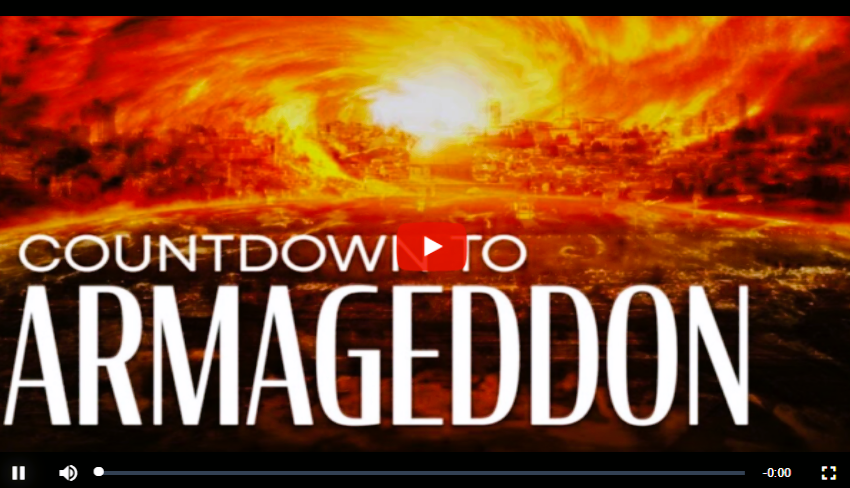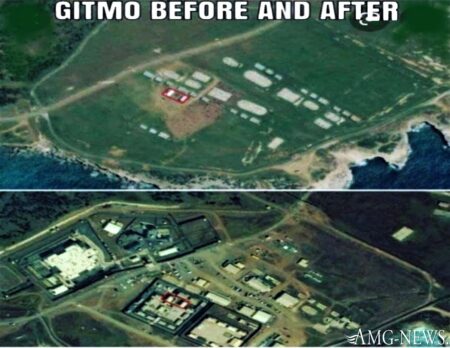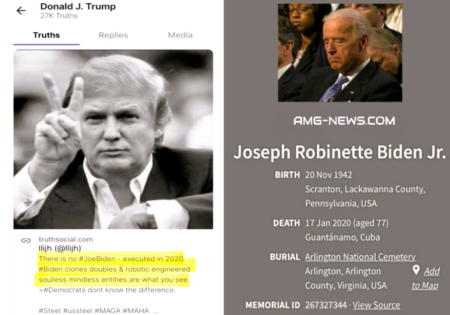Doomsday on the Horizon: The “Dead Hand” and Ukraine’s Latest Strike
In a world spiraling toward potential chaos, whispers of doomsday mechanisms and the stark reality of missile strikes highlight how fragile global stability truly is. Recent reports have shaken the geopolitical stage: Ukraine launched 12 UK Storm Shadow/Scalp EG cruise missiles at Russia’s Kursk region, according to Russian officials. Meanwhile, Russia’s apocalyptic “Dead Hand” system looms in the background, a weapon of last resort that could obliterate human civilization as we know it. This alarming mix of modern warfare and Cold War-era paranoia underscores the precariousness of our existence.
Let’s dive into what these events mean for global security, why the specter of the Dead Hand continues to terrify military analysts, and how Ukraine’s missile strike reflects the evolving nature of modern conflict.
DON’T MISS THE LATEST NEWS
THE BIG BOOOOM! TRUMP’S MESSAGE SHAKES THE WORLD: “IN THREE DAYS, WE’RE COMING HOME!” Trump’s Explosive Post Leaves the Internet in Frenzy!
BOOOM! Judy Byington Bombshell Report! The Storm Has Arrived. Ukraine Bombs Russia With US Missiles. Biden Trying To Start WW III. . .
BREAKING NEWS NOW! TRUMP’S URGENT MESSAGE TO THE WORLD: “STOP THE WAR, PREVENT WWIII!” VIDEO
The Unforgiving Stage: What Happened in Kursk?
Reports suggest that Ukraine deployed 12 Storm Shadow/Scalp EG cruise missiles, powerful munitions provided by the UK, to target Russia’s Kursk region. These missiles, known for their precision and ability to evade radar detection, are capable of causing significant damage. Russia, unsurprisingly, was quick to condemn the attack, framing it as an escalation in a conflict already brimming with tension.
- What Are Storm Shadow Missiles? The Storm Shadow is a long-range, air-launched missile designed for deep strikes against fortified targets. It’s equipped with advanced navigation systems and carries a warhead capable of penetrating hardened defenses. These weapons allow Ukraine to strike critical Russian infrastructure far beyond the front lines.
This strike wasn’t just a tactical move—it was symbolic. Kursk, a region historically tied to Russian strength (think of the epic Battle of Kursk during WWII), now finds itself under the shadow of Western-backed weaponry. The attack represents not just a military action but a bold statement: Ukraine is willing to use cutting-edge Western arms to strike deep into Russian territory.
Guides and Angels: Embracing the Presence of Spiritual Guides in Our Lives!

Russia’s “Dead Hand”: A Living Nightmare
While missile strikes capture the headlines, a more ominous threat lingers beneath the surface: Russia’s Dead Hand system, also known as “Perimeter.” This Soviet-era mechanism is the stuff of dystopian nightmares. Designed to ensure mutual destruction, it can autonomously launch a full-scale nuclear attack if it detects no response from Russian leadership.
- How Does the Dead Hand Work? The system’s operation is both chilling and fascinating. In essence, Dead Hand monitors a range of parameters—seismic activity, radiation levels, and communication signals. If it determines that a catastrophic strike has incapacitated Russian leadership, it automatically unleashes Russia’s vast nuclear arsenal. No human intervention is required.
This system wasn’t just designed as a deterrent; it’s a promise. Should the unthinkable occur, the Dead Hand ensures no adversary escapes unscathed. However, its very existence raises critical questions. What if the system malfunctions? Could it be triggered by an accident? The prospect of an autonomous apocalypse looms large.
Breaking News: The Secret to Male Power Unveiled – Big Pharma’s Worst Nightmare is 100% Natural!
Ukraine’s Strategy: Strength in Precision
The use of Storm Shadow missiles reflects a shift in Ukraine’s military strategy. By leveraging advanced Western technology, Ukraine has moved beyond mere defense and is now capable of striking critical Russian assets.
- Why Target Kursk? Kursk is not just a strategic location; it’s a symbol of Russian power and resilience. By targeting this region, Ukraine demonstrates its ability to disrupt Russian logistics and supply chains, weakening Moscow’s war effort. Furthermore, these strikes serve as psychological warfare, undermining Russia’s sense of security within its own borders.
But this strategy comes with risks. Every strike deep into Russian territory escalates tensions, increasing the likelihood of retaliation. As Ukraine becomes more emboldened, the question arises: how far is too far?

The Geopolitical Fallout
Ukraine’s missile strike and the looming presence of the Dead Hand are not isolated events; they are pieces of a larger puzzle. This conflict is reshaping alliances, redefining military doctrines, and pushing the world closer to uncharted territory.
- Western Involvement: A Double-Edged Sword The provision of advanced weapons like the Storm Shadow shows how deeply the West is invested in Ukraine’s success. While this support bolsters Ukraine’s capabilities, it also risks drawing NATO directly into the conflict. Each strike using Western arms could be seen as a proxy attack, fueling Russian narratives of Western aggression.
- Russia’s Next Move For Russia, these developments represent a direct challenge to its authority. Moscow’s response will likely be multifaceted, ranging from intensified military operations in Ukraine to possible cyberattacks or hybrid warfare against Western nations. The Kremlin must project strength while avoiding actions that could spiral into full-scale war.
Wisdom! Health Through God’s Pharmacy: Eight Biblical Herbs, One Supplement, A LifeTime Of Wellness and Grace
The Specter of Mutual Destruction
The presence of Russia’s Dead Hand adds a layer of existential dread to this already volatile situation. This system ensures that even in defeat, Russia retains the power to devastate its adversaries. But at what cost?
- Moral and Ethical Implications The Dead Hand embodies the ultimate deterrence but also the ultimate gamble. By automating the decision to annihilate, humanity hands over its fate to an emotionless machine. This raises profound ethical questions: can any nation justify the existence of such a system? Does the mere possession of this technology make accidental Armageddon more likely?
- The Role of International Agreements Efforts to reduce nuclear arsenals and eliminate doomsday systems have largely stalled in recent years. The renewed tension between NATO and Russia only exacerbates this trend. Without renewed diplomacy, the Dead Hand—and similar systems elsewhere—remains a ticking time bomb.

Modern Warfare’s Transformation
The conflict in Ukraine has become a proving ground for modern warfare, showcasing everything from drone swarms to precision-guided missiles. The integration of advanced technology has fundamentally changed how wars are fought.
- The Rise of AI in Combat The use of autonomous systems, from drones to defense mechanisms, mirrors the logic behind the Dead Hand. AI-driven warfare reduces human involvement but raises the stakes. Could a future conflict see machines making decisions about life and death on a massive scale?
- Hybrid Warfare: Beyond the Battlefield Ukraine’s use of precision missiles is only one facet of its strategy. Hybrid warfare—combining cyberattacks, propaganda, and economic disruption—has become a key feature of this conflict. Russia, too, has embraced these tactics, targeting critical infrastructure and spreading disinformation.
A World on Edge
The combination of Ukraine’s bold missile strikes and the ever-present threat of the Dead Hand paints a grim picture of global security. As technology advances and tensions rise, the margin for error shrinks. A single misstep—whether a misfired missile or a malfunctioning system—could unleash unimaginable destruction.
- Strengthen Diplomacy: Renewed dialogue between NATO and Russia is essential. The stakes are too high for communication to break down.
- Regulate AI in Warfare: International agreements must address the growing role of autonomous systems in conflict.
- Reduce Nuclear Arsenals: Reviving arms control agreements could help de-escalate tensions and reduce the risk of catastrophic accidents.
EXPOSED: Viral Content! Scientists from Fukushima University of Japan just proved this silent clog is the real cause of BPH in millions of men…

A Precarious Future
The events unfolding in Kursk and the haunting specter of Russia’s Dead Hand underscore the fragility of our modern world. Ukraine’s precision strikes show how technology can empower smaller nations, while the Dead Hand reminds us of the apocalyptic potential of human ingenuity. Together, they form a narrative of power, fear, and survival.
The question remains: can humanity navigate this dangerous moment without plunging into catastrophe? As the world watches, the choices made by leaders today will determine the fate of tomorrow. Let’s hope those choices reflect wisdom, restraint, and a commitment to peace.













